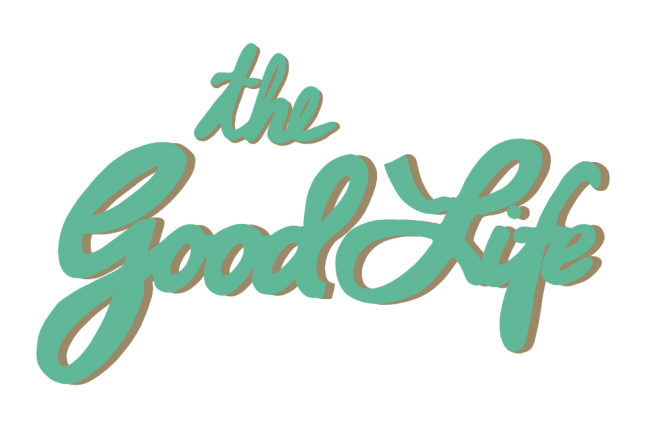You have /5 articles left.
Sign up for a free account or log in.

Ellie Bell from Ellie Bell's Images
Over the past 20 years, well-being indicators among undergraduate students have followed a worrisome trend suggesting generalized anxiety, depression and social anxiety are on the rise. The COVID-19 pandemic exacerbated this trend, and students have experienced further significant decreases in social-psychological well-being since 2020. The underlying causes of these issues are a matter of scientific inquiry and public debate, but one solution is coming from deep within the halls of the academy, in departments not normally associated with practical advice for daily life.
We’re speaking, of course, about philosophy and the humanities, departments that have seen a decrease in enrollment over the past decade but find themselves uniquely well positioned to help address the rising existential threat among young adults. Within these departments there is a proliferation of courses with a new spin on the age-old question that has plagued humans for millennia: What does it mean to live a good life?
Good life courses come in different flavors, but they are primarily characterized by assignments and readings that ask students to consider what gives their lives meaning—how they can use their talents to contribute to the greater good and to enhance their own sense of worth and well-being. These courses are massively popular; Yale’s Life Worth Living is one of the most sought-after courses in the humanities department, and the 2023 book based on the course’s teachings was an instant New York Times best seller. Yet the impact of these courses on students is unclear. College faculty and administrators would like to know why these courses work (if they work) to improve students’ lives and how to replicate or scale the courses.
To find out, we partnered with the Arthur Vining Davis Foundations on a study of 14 colleges and universities throughout the United States. Through interviews and survey data from 17 professors and more than 400 of their students, we identified the essential pedagogical features of good life courses, how they impact students’ sense of purpose and well-being, and what educators can do to optimize successful implementation of good life courses at their postsecondary institutions.
The Origin of Good Life Courses
According to Anna Moreland, professor in the Department of Humanities at Villanova University and author of the forthcoming book Daring to Live: The Guide to a Meaningful Life, “Students arrive at Villanova with great study skills; they’re really smart; they know how to write. They’ve won the race of high school. But by the time they’re ready to graduate four years later, we find them ill equipped to live a flourishing and successful and happy life in the most robust meanings of those terms.”
To address their concerns about undergraduate student development, Villanova and other institutions in the United States and abroad have developed courses that help students engage in deep questions surrounding how to lead a good life and the meaning of happiness—both within their undergraduate institution and in preparation for life beyond. The origin of these good life and happiness courses can be traced to Pierre Hadot’s influential book Philosophy as a Way of Life, in which he describes the early Christian and Greco-Roman traditions of habits and practices called spiritual exercises. First published in 1995, the book sparked a re-emergence of ancient philosophical and spiritual exercises, which were then reimagined for undergraduates.
Although early versions of good life courses were found in philosophy departments, variations of the courses can now be found in several disciplines, including religion and psychology. These courses tend to be experiential and highly personal. Faculty emphasize blending teachings from ancient philosophers or tenets of modern-day positive psychology with assignments asking students to live out these lessons in their day-to-day lives and reflect on their experiences. Students may be asked to spend a week living life as Confucius would, or they may study recent psychological research on happiness and make an action plan for improving their own social and emotional well-being.
With each semester, new versions of these courses are popping up across the United States. However, there is not a recipe for the techniques faculty are using to teach students about the good life, and there is little research on how students are experiencing and responding to these courses. In spite of the popularity of good life courses and their growth as a national phenomenon, there are lingering questions about the efficacy of these courses to address the challenges students are facing. Can a single college course guide students through deep reflection and possibly toward a more meaningful, happier life?
Our findings suggest a single course can, though some courses are more effective than others.
Good Life Course Ingredients
We conducted the study in two phases. The aim of the first phase was to define the essential features of good life courses and get a sense of how they impact students’ lives. In Phase I, we interviewed six faculty members teaching good life courses at different colleges and universities and six of their students. Primarily, we wanted to know whether the courses increased students’ well-being and their sense of purpose—whether they have identified what makes their lives meaningful. But we also sought to clarify the key ingredients of a good life course.
From the interviews, we uncovered five pedagogical features that students and faculty identified as essential for promoting meaning, purpose and well-being in the context of good life courses. We labeled these constructs reflection, trust, new ways of thinking, space and practical application.
| Pedagogical Feature | Definition |
| Reflection | Students were given ample and consistent opportunities to reflect on course materials, through techniques such as personal journaling, peer dialogue groups and shared discussion boards, etc. |
| Trust | Students trusted that they could openly and safely share their experiences with their peers and the instructor. |
| New ways of thinking | Students felt they gained new approaches to decision-making, problem-solving or ways of thinking. |
| Space | The instructor provided students with opportunities to ask questions and consider ideas in the course, which otherwise they wouldn’t have the tools, time or space to address. |
| Practical application | Students had opportunities to apply learnings from the class in a practical way, connecting material covered in class to their own personal experiences and daily lives. |
We also identified five ways in which students began exploring their lives as a result of good life course participation. We are calling these experiences Areas of Discovery and have identified five subcategories: setting new goals, rediscovering faith and familial roots, redefining relationships with leisure and technology, building new friendships, and accepting uncertainty and failure.
| Area of Discovery | Definition |
| Setting new goals | Students set new goals as a result of participating in the course. |
| Rediscovering faith and familial roots | Students re-engaged with cultural or familial roots, including recommitting to family/faith traditions. |
| Redefining relationships with leisure and technology | Students practiced new habits around technology (e.g., social media breaks) and reflected on how they spent their leisure time. Some started a new hobby. |
| Building new friendships | Students developed new friendships in the class, bonded with other students and engaged in open and honest class discussions. |
| Accepting uncertainty and failure | Students reflected on and discussed uncertainty about their futures, including unpredictability of success and failure. |
Good Life Course Impact
In Phase II of the study, we collected pre- and postsemester survey data from more than 400 students and their professors at 13 colleges and universities across the United States. Using these data, we examined whether participation in good life courses was linked to growth in student purpose, well-being and the five areas of discovery. We explored how the presence of each of the five pedagogical features enhanced students’ experiences in the courses and promoted deeper growth in purpose, well-being and discovery.
Results suggested broad interest from both students and faculty to engage with good life course topics. The students in our study demonstrated statistically meaningful growth in their sense of purpose between the beginning of the semester and the end of the semester, providing evidence that one of the primary goals of good life courses—to help students discover a personal sense of purpose and meaning—may be attainable in a one-semester course with certain pedagogical features.
In addition to developing a stronger sense of purpose over the course of the semester, the students in our study reported exploring and discovering a variety of new perspectives, relationships and habits. Students engaged or (re-engaged) with faith, reconsidered their relationships with technology, developed new friendships and learned to become comfortable with uncertainty.
Not All Courses Are Created Equal
While the results are encouraging, they also suggest that certain features of these courses are more important when it comes to achieving impact. Two findings were especially noteworthy.
First, students in courses with a practical application component showed significantly higher growth when it comes to setting new goals. For faculty who are interested in developing courses that help students cultivate a sense of purpose and establish new directions in their lives, including practical applications in course design is critical.
Second, students in courses that provided tools to engage in new ways of thinking were more likely to experience growth in a number of areas, including developing a sense of purpose and discovering new perspectives, relationships and habits.
Students connected to these pedagogical features and described the profound impact of their good life courses on mental health. One student said, “This course did everything. It helped me define my values more concretely; it helped me establish daily habits such as mindfulness and gratitude journaling; it gave me new perspectives on spirituality and purpose.” We are encouraged by these findings, which were identified through the course of a single semester. Might there be compounding positive effects on students’ well-being after implementing practices from good life courses beyond the semester?
Next Steps
In all, the results of this two-phase study shed light on the experiences of students and faculty who participate in good life courses and highlight the potential impact of these courses on students’ personal growth. As these programs expand and replicate (the University of Notre Dame announced last month that it is the recipient of a $3 million grant from the John Templeton Foundation to support development of courses on “human flourishing”), they may find success implementing the pedagogical features and areas of discovery identified in our study.
Future studies may wish to consider the durability of the impact of good life courses, such as whether students retain and further refine the skills they develop in good life courses as they move through their postsecondary educations and beyond. For now, the current study represents an early evidence base of the effectiveness of good life courses and a signal to higher education of their potential impact on the lives of undergraduate students.






.png?itok=IbqmTd2P)

